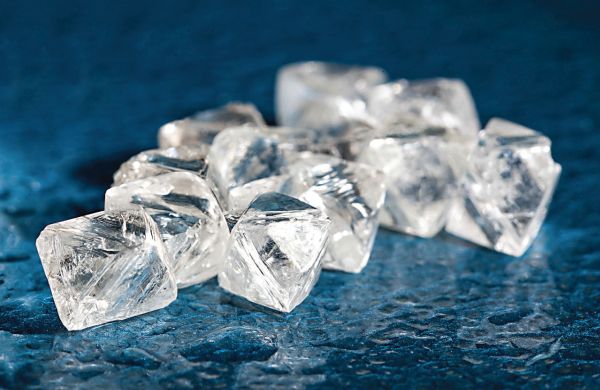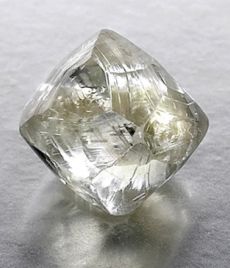|
|
Five Essential Natural Diamond Truths
Oct 24, 2018 12:00 PM
By Diamond Producers Association
|
|
|
 |
|
1. Diamonds are older than life on Earth, a true
miracle of nature.
Long before there was life on Earth, there were diamonds. Most were created one to three billion years ago, and the youngest diamond ever found was over 100 million years old. Originating more than 100 miles beneath the Earth, they were pushed to the surface by volcanic eruptions 300-400 million years ago, long before dinosaurs roamed. Diamonds are the oldest thing that most of us will ever hold. |
|
|
2. Diamonds are rare and getting rarer everyday.
The number of recovered diamonds peaked in 2005 and will decrease significantly over the next decade. Diamond-bearing kimberlites, the ancient, underground volcanic pipes that hold most of today’s diamonds, are very hard to find. In fact, most of the diamonds recovered today come from kimberlites discovered decades ago, which is why diamond production is gradually decreasing and diamonds are becoming rarer.
|
3. Demand for diamonds has never been stronger.
2017 was the strongest year ever for diamond jewelry in the world, in- cluding in the US. Millennials represent 59% of the value of diamond jewelry demand, while making up only a quarter of the population. Research shows that millennials have a strong interest in products that offer authenticity, rarity and preciousness – and a billion-year-old diamond is an ideal expression of authenticity in their lives and relationships. A real, natural diamond carries deep emotional meaning in a swipe-right world where things are increasingly fast and artificial.
|
Source: De Beers Insight Reports 2017, 2018
|
59%
of the value of diamond jewelry demand in 2017 was from millennial consumers. |
| 4. “Conflict diamonds” belong to the past. |
| “Conflict diamonds,” as depicted in the 2006 movie Blood Diamond, set in the 1990s, are largely a thing of the past. Since then, African rebellions have receded and the industry has put in place strict controls
– e.g. the Kimberley Process – to ensure that no diamonds coming from conflict-zones are traded. As a result, 99.8% of diamonds are Kimberley-compliant. Moreover, all major producers have safeguards in place to guarantee their diamonds are produced responsibly. |

Source: diamondfacts.org |
5. The diamond industry makes an important contribution to the world.
The diamond sector supports the livelihood of 10 million people globally, including 1.5 million artisanal and small-scale miners and their families in Africa and South America who provide 15% of the world’s diamonds and whose livelihoods depend on demand for diamonds. The discovery of diamonds in Botswana has transformed the country from one of the poorest in the world to a middle-income country. Today, every child there receives free schooling until the age of 13 thanks to diamond revenues that represent almost a third of Botswana’s GDP. In the Indian state of Gujarat, the diamond sector employs about one million people and funds schools and hospitals.
|

Source: DPA |
| By any standard, diamond mining has a very small environmental footprint and no chemicals are used to remove diamonds from the Earth. Mining companies are closely monitored by governments and local communities. Many operations are working on projects to move towards carbon-neutral status. The carbon footprint of a 1-carat polished, natural diamond is smaller than that of most CVD synthetic diamonds of similar size. |
|
You can download the DPA's original PDF here.
|
|
|
|
|
|
|
|
|
|
Tags:
Diamond Producers Association
|
|
Similar Articles
 Cullinan Diamond Report Cullinan Diamond Report
|
|
Jan 01, 2022
|
|
| SPONSORED | Image: Cullinan Diamonds Diamonds get stolen, swapped and recut, all dramatic situations for
|
|
|
|
|
|
|
|
|
|
|

|
|